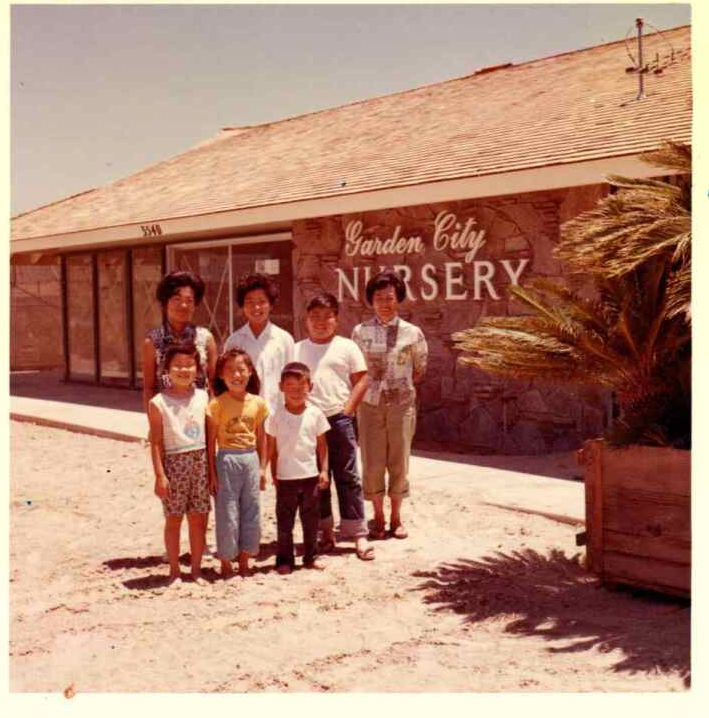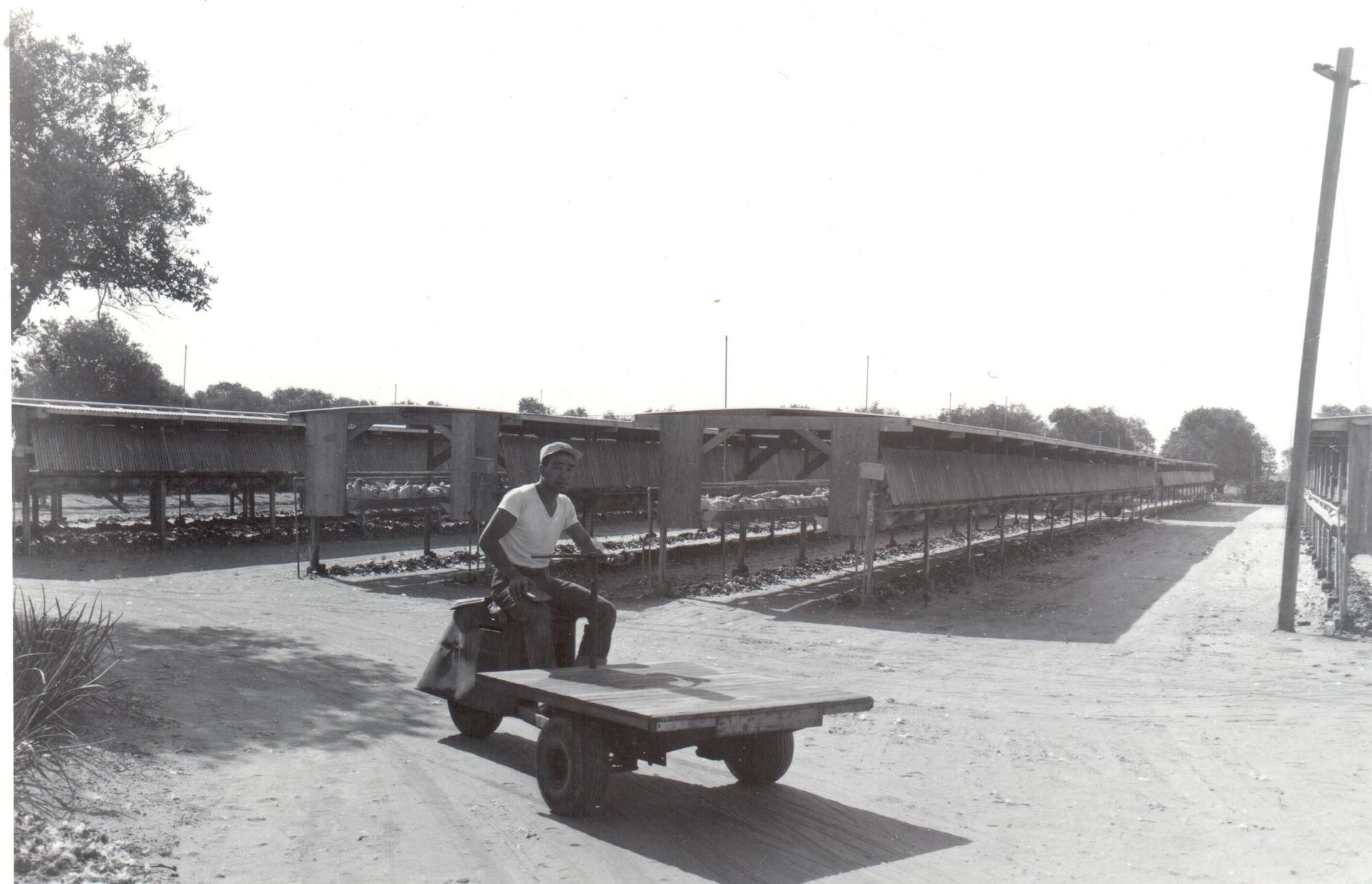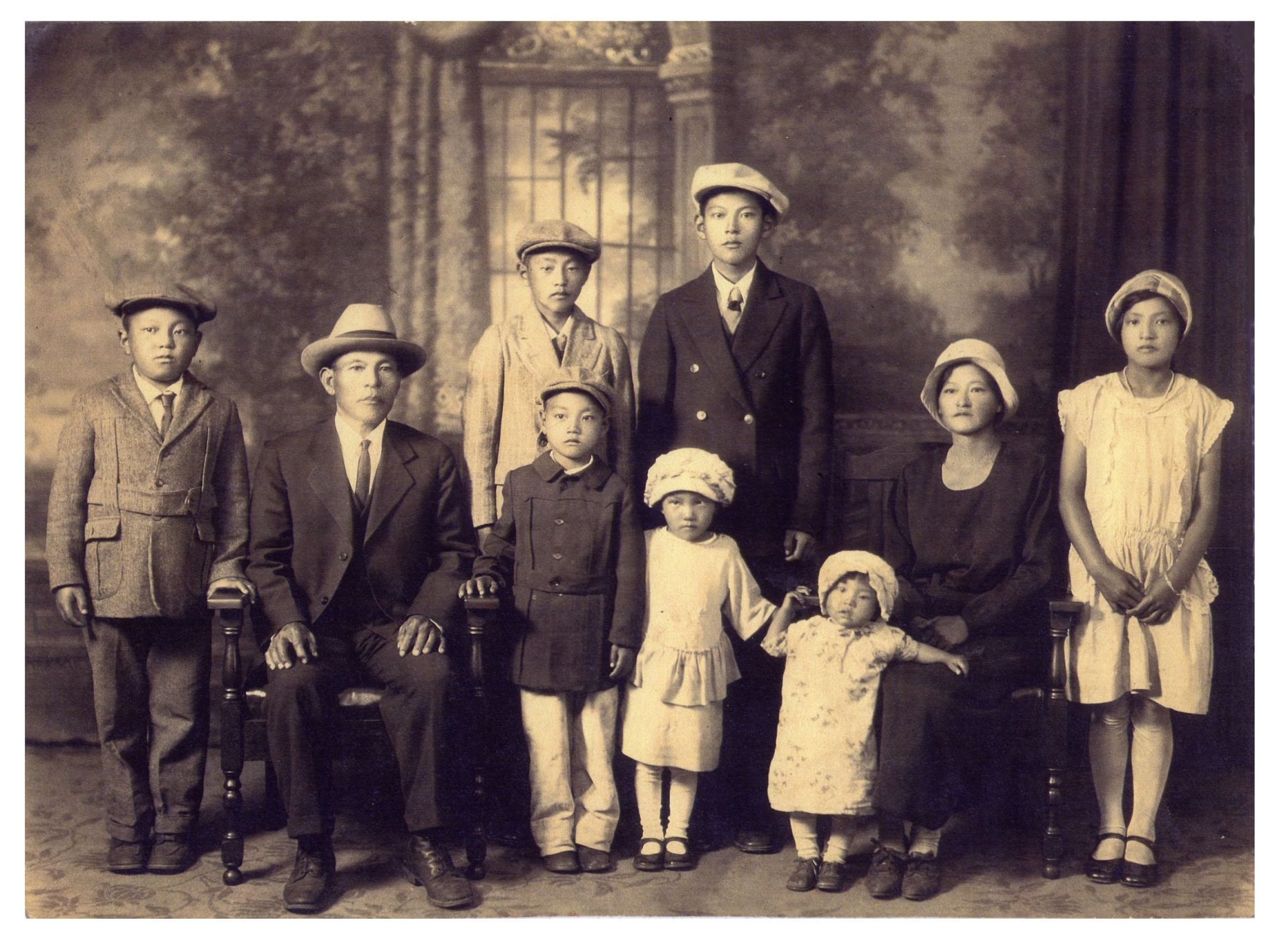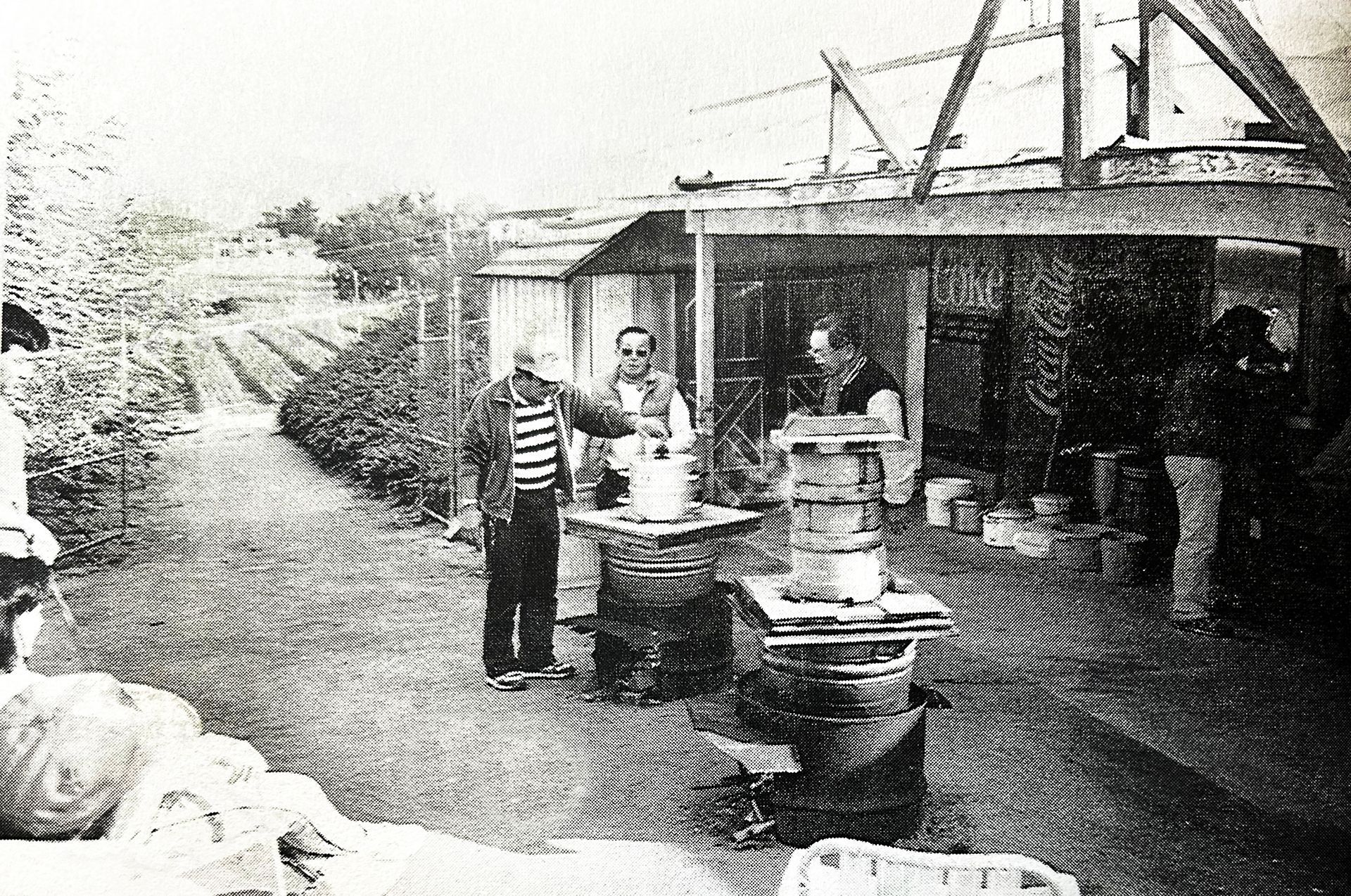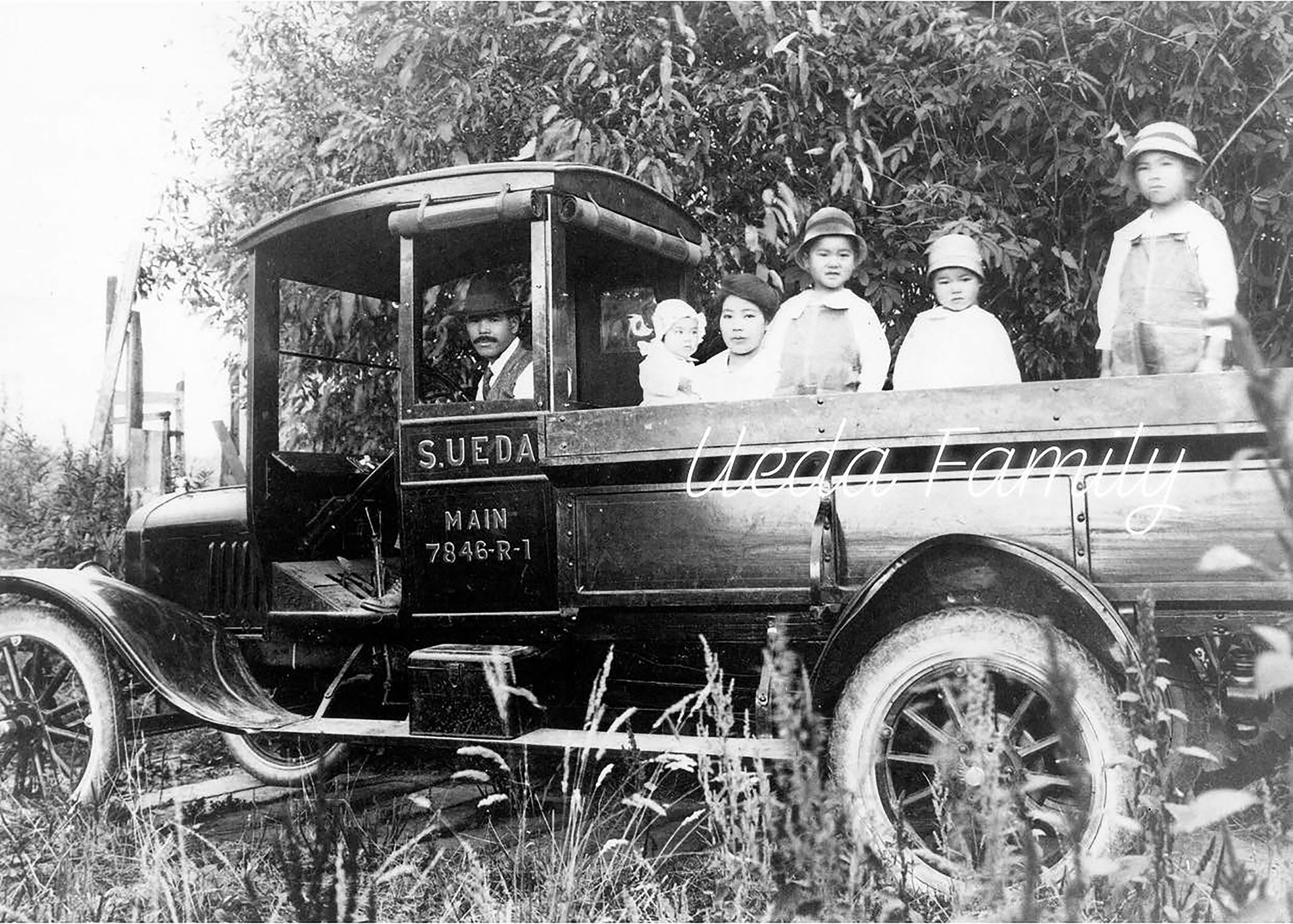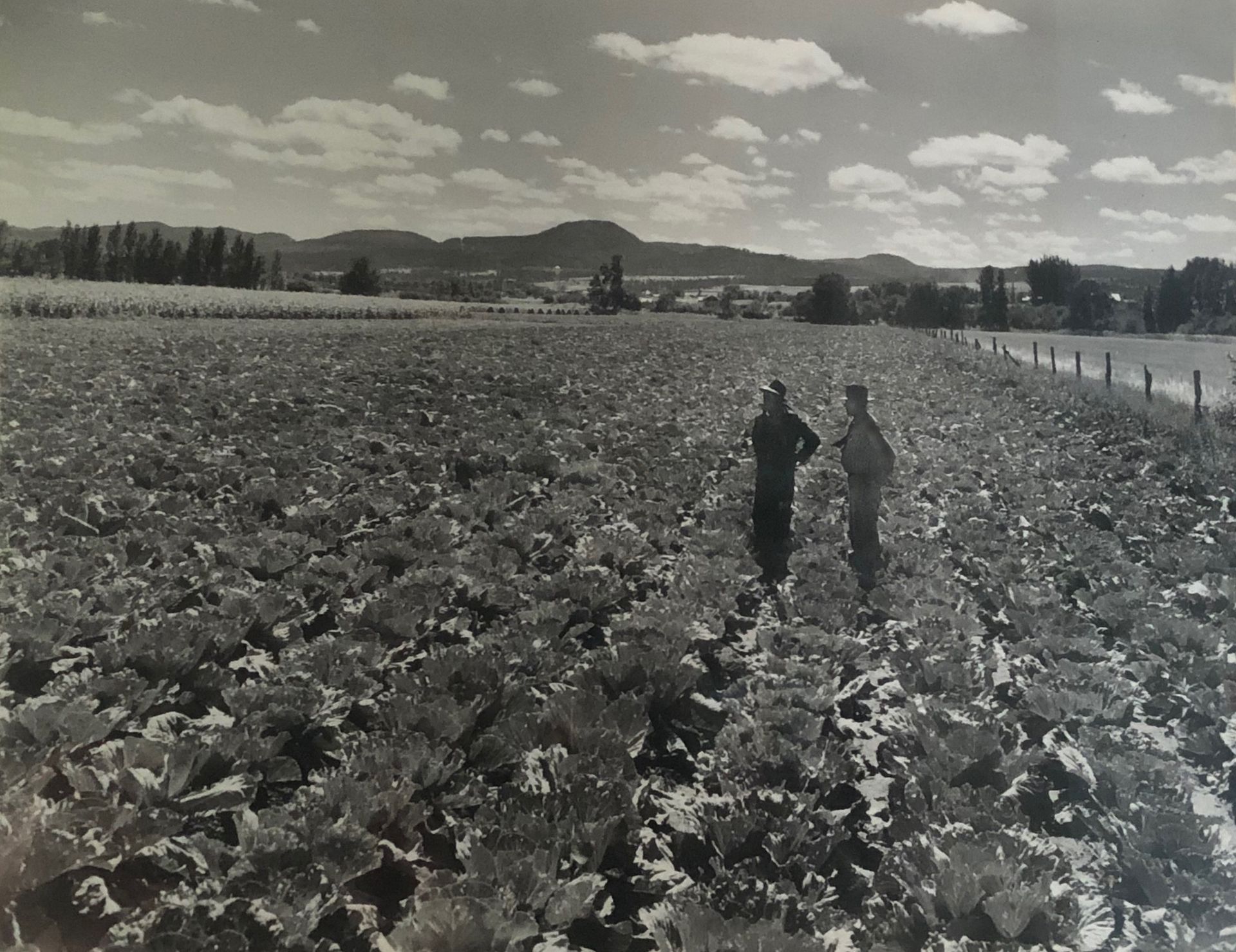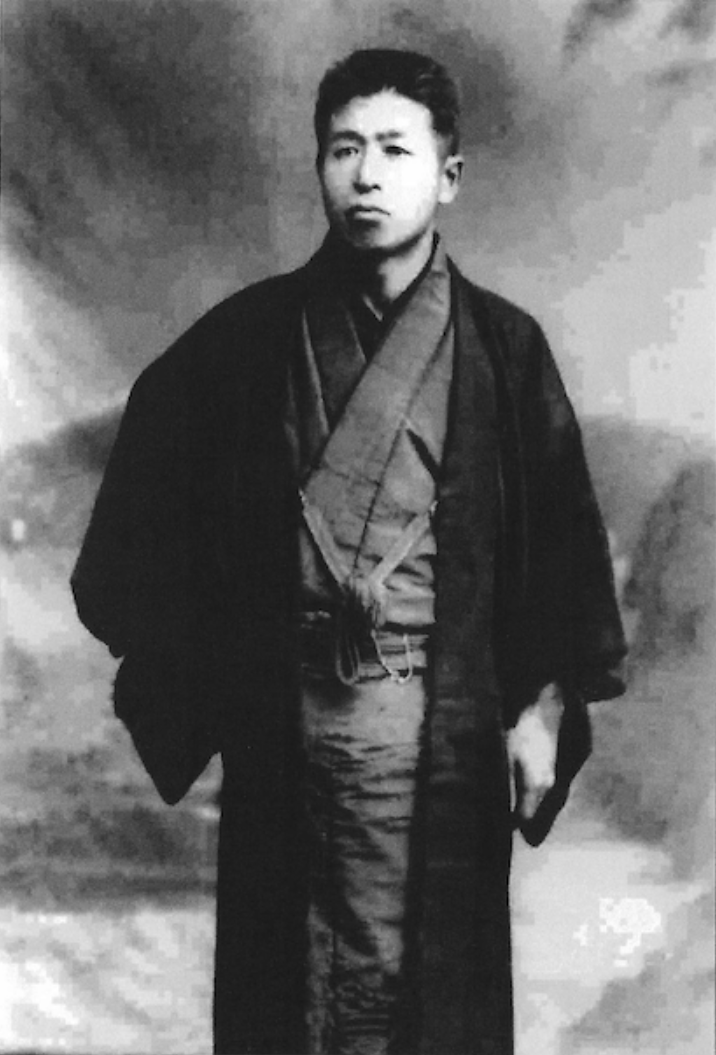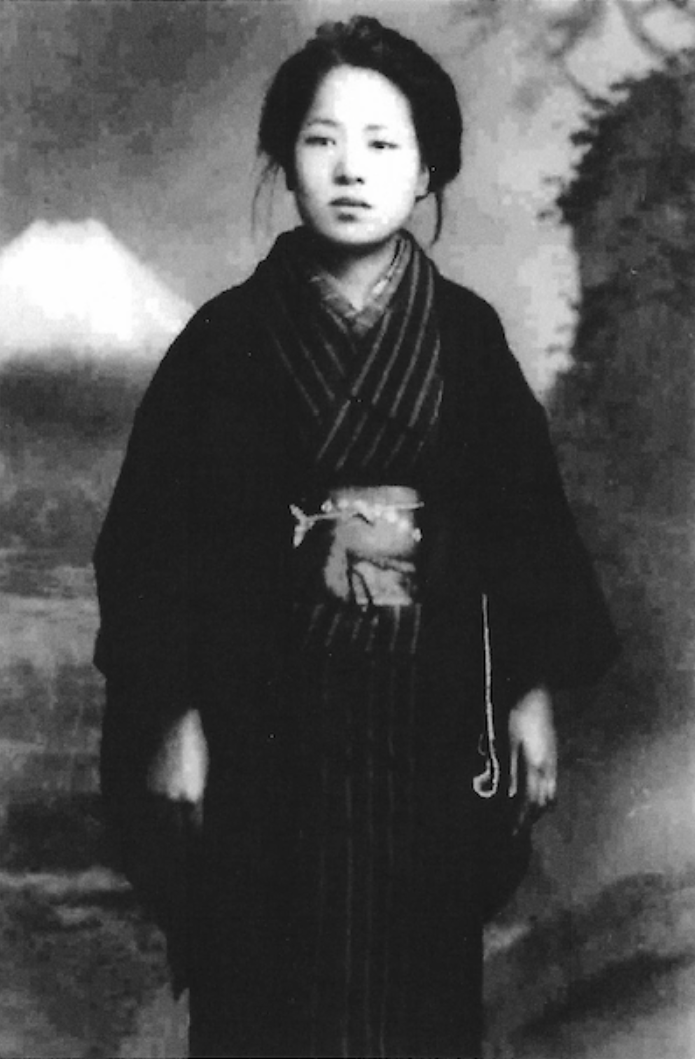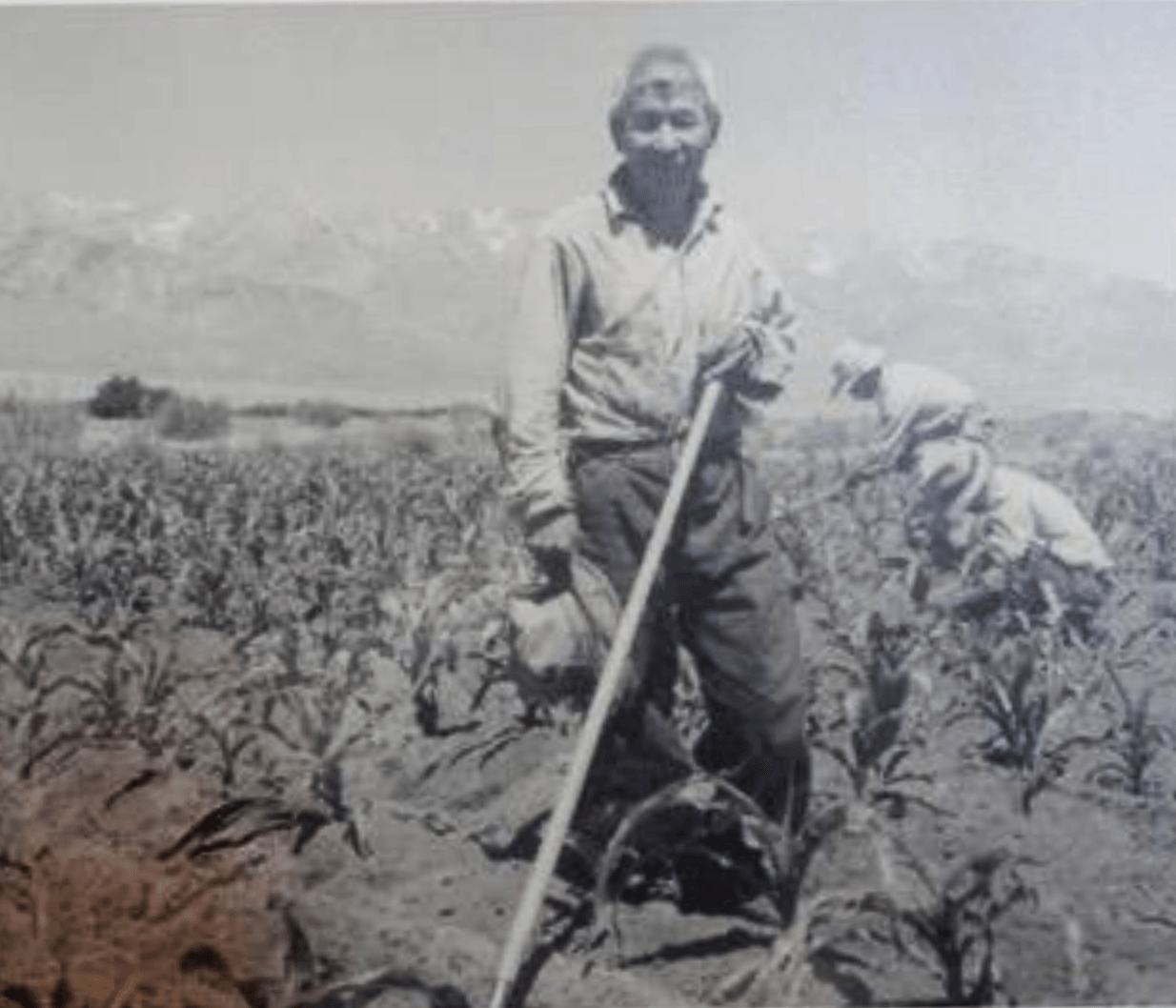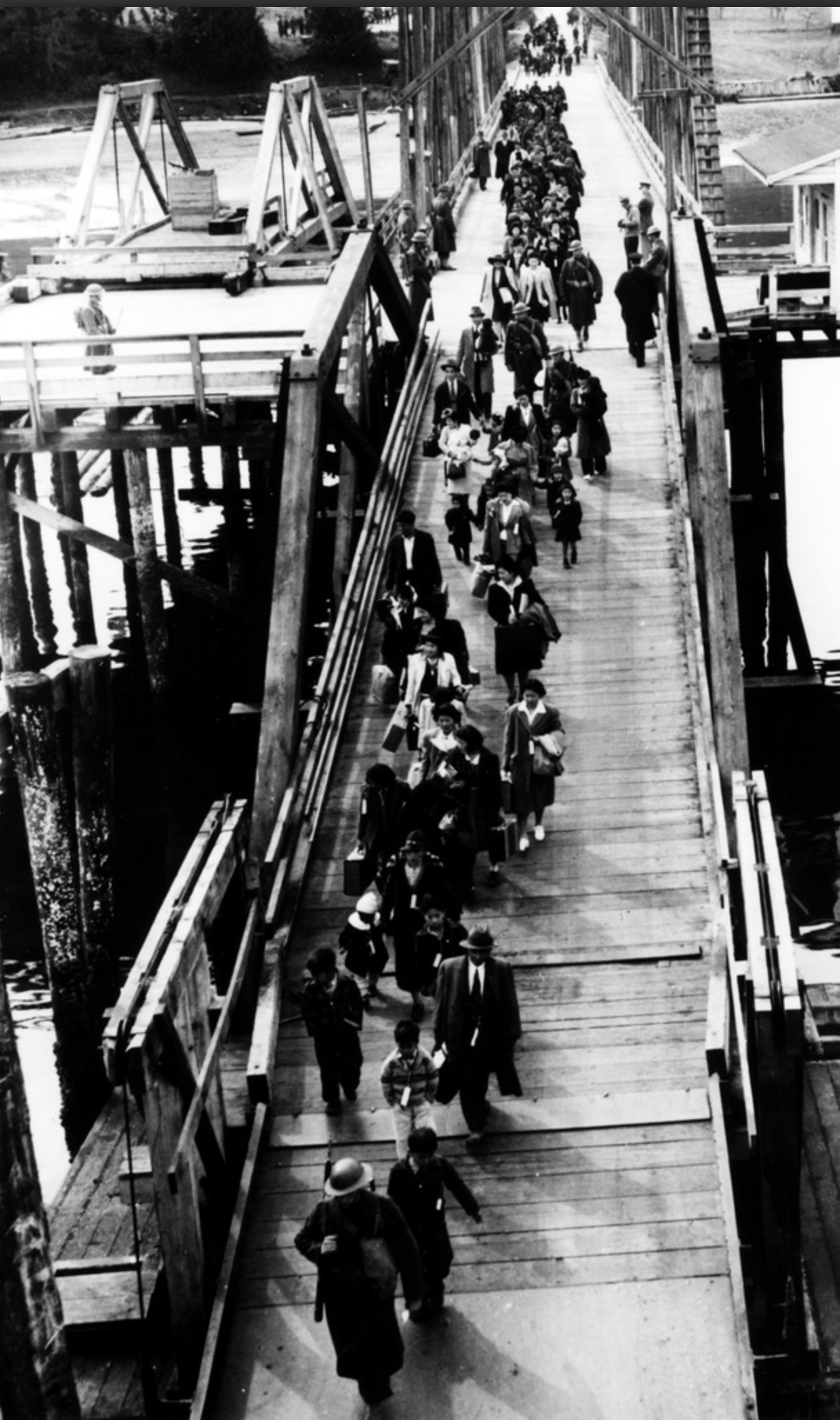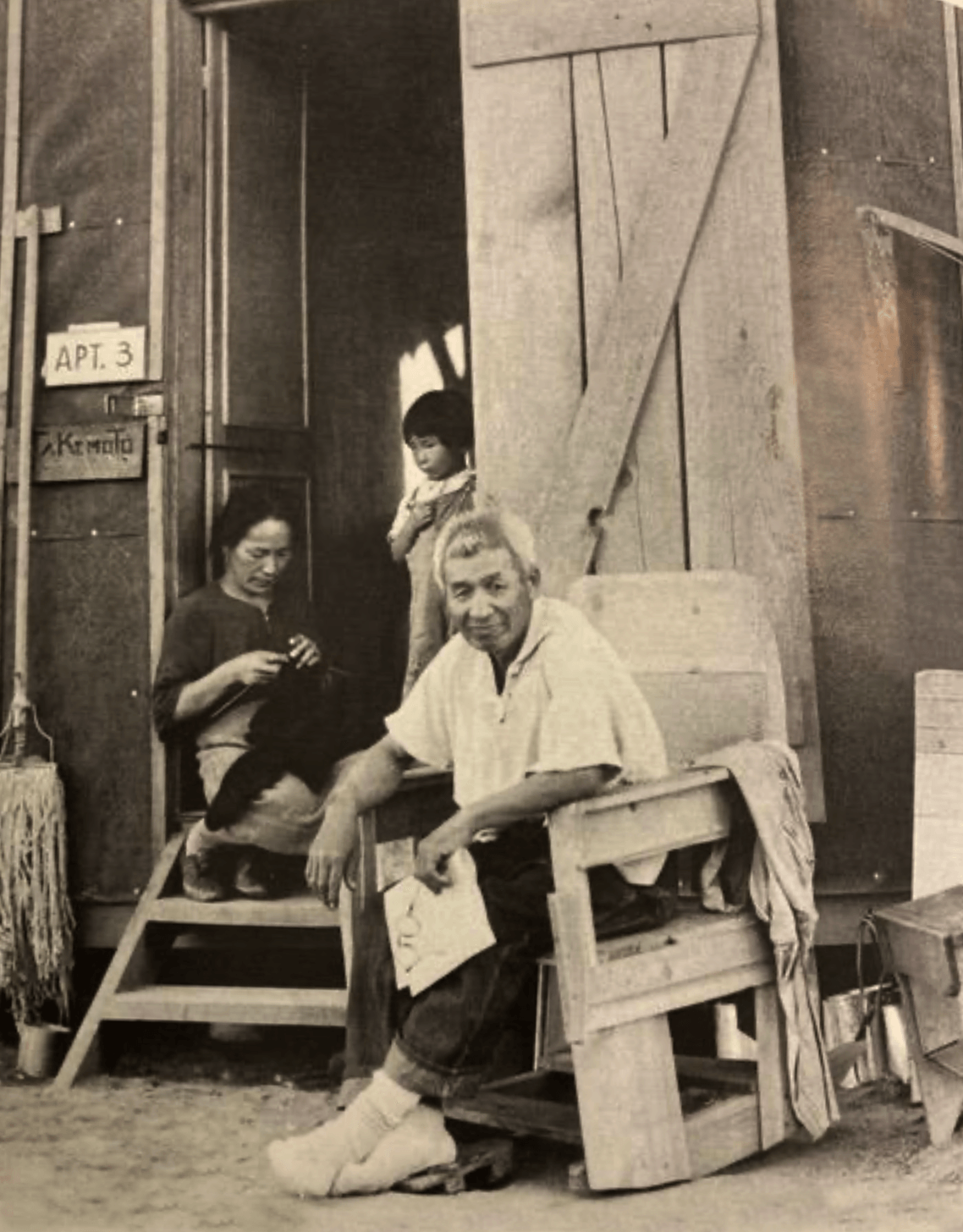Takemoto Farm
From Issei to Today: The Takemoto Family and Farm by Bill Takemoto and his daughter Susan.
My father Saichi Takemoto was born in 1885 on Oshima Island in Yamaguchi Prefecture. The island is about the size of Bainbridge and is the same island from which other families such as the Omotos and Nakatas immigrated.
As a young man, Saichi and his two older brothers left Japan to seek work in America. They initially pursued farm work in Hawai’i. While the oldest brother stayed and put down roots in Hawai‘i, Saichi and the 2nd oldest brother came to Seattle. At some point his older brother died in Seattle. After working various jobs, such as a dishwasher, houseboy and movie theater employee, Saichi acquired land on Bainbridge Island to start a strawberry farm. Eventually he wanted to settle down and take on a wife. Through a matchmaker from his village in Japan, he met and married Satsu Koyama, then brought her back to Bainbridge Island.
Some time before 1920, Satsu died. Saichi consulted the same matchmaker to find him another wife. The matchmaker arranged for him to marry Satsu’s younger sister Yone, who was only 18 years old. In 1921 they returned to the island to begin a life of farming. From that union Victor was born in 1926, Bill in 1928, Roy in 1930, Fred in 1932, James in 1934 and Teruko, the only girl in 1938. We lived on 10 acres at the southwest corner of what is now Highway 305 and NE Lovegreen Road. The land was heavily forested, so we did without the help of modern equipment such as chainsaws. We relied on dynamite to blow up stumps, then used horses to pull up the roots.
After Pearl Harbor was attacked on December 7, 1941 and President Roosevelt issued Executive Order 9066, our family was among the 227 other Bainbridge Island families that were forcibly removed from our homes and sent to Manzanar internment camp located in California’s Owens Valley at the foot of the Sierra Nevada. After about a year, we had the choice of going to Minidoka camp in Idaho where many Seattle area Japanese American residents were held, but decided to stay at Manzanar along with a few other Bainbridge Island families. My father worked in the fields there. After about three years at Manzanar, we were finally permitted to travel outside the camp and eventually leave. In April 1945, my father decided it was time to return to Bainbridge Island because it was strawberry planting season. Our family was the first family to return. We found our home completely ransacked, windows broken and anything of value gone. The fields were overgrown. With the help of friends and people we did not know, we were provided with some essentials and help to return the fields to farmable condition. My brothers and I worked on weekends and in the summer on the Moji farm run by Nick Buesit for extra income.
Saichi died on October 1972 at the age of 87. Yone died on January 2003 at the age of 100. She was probably the last of the original Issei from the island to pass away.
When Victor, the oldest sibling returned from Manzanar, he enrolled at the University of Washington. After he graduated in 1949, he worked in the medical service area for 49 years and retired in 1998. Vic and his wife Lily had 3 children, Vicky, Stanley and Jon. All live in the Seattle area. Victor passed away in late 2021 at the age of 95.
After my (Bill) graduation from high school, I enlisted in the U.S. Air Force in January 1948. During my tour of duty in Tokyo, I met Nobuko and we were married in 1963. After serving 20 years in the Air Force, I retired in 1968. I relocated to my current home in Kent, Washington. After retirement, I was hired by Boeing as an instructor in flight training. I worked for 24 years and retired in 1992. After our children finished high school Nobuko worked for United Airlines and retired in 1998. Our son Paul graduated from the University of Washington and is a homicide detective with the Seattle Police Department. He and his girl friend Kate, live in Seattle. Our daughter Susan graduated from Yale College and Georgetown Law Center. After working for twelve years as an attorney, she retired and she and her husband Dave, are raising three children.
Roy also enlisted in the U.S. Air Force after graduating from high school. He met and wed Toshiko while stationed in Tokyo. After more than 25 years of service, he retired. Roy, along with his wife and two daughters, moved to Sun City, Arizona. Roy worked in civil service until he was diagnosed with cancer. He passed away in September, 1991 at the age of 61. Toshiko still lives in Sun City West. Kathy her oldest daughter, lives in San Jose with her husband Richard and their daughter Patty. Another daughter lives in Riverside and has a son.
Fred also served a short tour in the U.S. Air Force. After his discharge, he returned to Seattle to live and work. He worked part-time and managed his rental properties. He passed away in early 2021.
James, the youngest brother worked as a CPA with the government and for private firms. He also volunteered as a docent. Later he had a private practice out of his home. James and his wife, Carolyn, lived in the Tacoma area. Carolyn now lives in Redmond near her daughter Annette. Annette and her husband Jason have two sons and live in Woodinville. Teruko Sua, the youngest child, was employed for 54 years by American Marine Bank in Winslow. When she was appointed branch manager, she was the first woman to hold that position in the State of Washington. Tinei her husband of 40 years, died while they were living in Poulsbo in 2008. She retired in 2014 and is living in Kingston. James passed away in 2009 at the age of 74.
Passport photo of Saichi Takemoto
Passport photo of Yone Takemoto
Saichi working the field in Manzanar
Forced removal from Bainbridge Island. The first 7 people are the Takemoto family in 1942
Bill in Air Force uniform
1929 Saichi, Yone, baby Bill and Victor
Saichi, Yone and sister Teruko
Yone at 100. Bill and wife Nobuko, son Paul, daughter Susan and 1st grandchild

